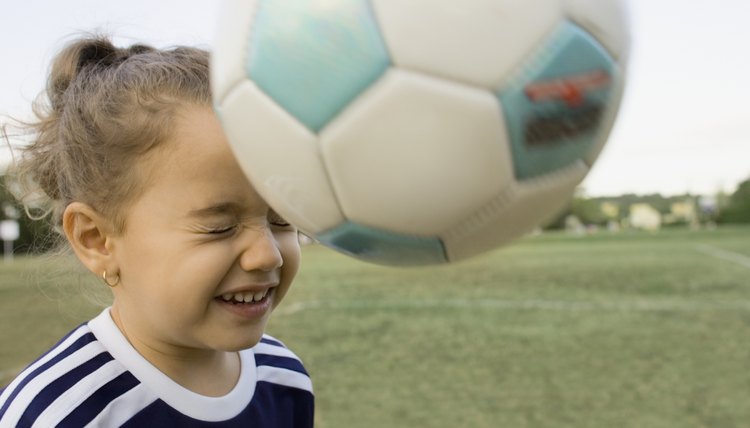More Articles
- How Does Air Pressure in a Ball Make the Ball Bounce Higher?
- How to Measure the Pressure in a Sports Ball
- How Does the Air Pressure of a Soccer Ball Affect the Distance it Goes When Kicked?
- Does the Temperature of a Basketball Affect the Bounce of the Ball?
- Does Air Pressure Affect the Bounce of a Basketball?
How Does Air Pressure Affect the Bounce of a Soccer Ball?

A predictable bounce makes soccer more enjoyable at the amateur level. And it’s a necessity at a high-stakes professional game, where a gifted athlete such as Brazilian star Marta needs to work with a ball that will bounce correctly in response to an artful touch of the foot. Air pressure is one of the variables that affects the soccer ball’s bounce, as anyone who has ever played any ball sport grasps intuitively.
Regulations
FIFA’s Laws of the Game contain a passage in Law 2, The Ball, requiring that the ball be spherical and inflated to a pressure equal to 0.6 to 1.1 atmosphere, the equivalent of 8.5 to 15.6 psi at sea level. English theoretical physicist and soccer player John Wesson writes in “The Science of Soccer” that this rule actually means to call for a pressure difference between the inside and the outside of the ball. The outside of the ball is 1.0 atmosphere, he explains, and the inside of the ball is this figure plus the FIFA requirement, namely 1.6 to 2.1 atmosphere. He points out that anything less than 1.0 atmosphere would make the ball collapse, and a pressure of 1.1 atmosphere would result in a floppy, barely inflated ball.
Elasticity
The bounce of the soccer ball “seems so natural that the need for an explanation might not seem apparent,” Wesson writes. To describe the obvious, he notes that when a solid ball bounces, such as a golf ball, the elasticity of the ball’s material allows it to bounce. A hollow ball with a casing, such as a soccer ball, has almost no elasticity, so a dropped deflated ball lies flat on the ground. Deflating a soccer ball from the recommended maximum can actually be helpful during practice, for example, if you want to work on juggling the ball and want it to bounce less off your practice foot, notes Alan Hargreaves in "Skills and Strategies for Coaching Soccer."
Pressure
A pressurized soccer ball obtains its elasticity and bounce from the air molecules trapped in its casing at a greater volume than in the outside atmosphere. The molecules move in random directions at high speed, colliding with each other and the inside of the ball casing to create pressure and a stiff surface. Air pressure is one of three factors affecting the duration of the bounce, the others being its size and weight. As FIFA standardizes the size and weight of the game ball at 27 to 28 inches and 14 to 16 oz., pressure provides the most likely variable to affect a bounce.
Ground Contact
Before the ball contacts the ground, air pressure is uniform throughout the ball, Wesson writes. But when the ball bounces on the ground, it deforms and increases the air pressure around the deformed area and rapidly throughout the ball’s interior. The uniform pressure during the bounce increases because the contact of the bottom of the ball with the ground reduces the ball’s volume. A ball reaching the ground at 20 mph deflects about 1 inch, and pressure rises by about 5 percent, he notes.
References
Writer Bio
An award-winning writer and editor, Rogue Parrish has worked at the Washington Post, the Baltimore Sun and at newspapers from England to Alaska. This world adventurer and travel book author, who graduates summa cum laude in journalism from the University of Maryland, specializes in travel and food -- as well as sports and fitness. She's also a property manager and writes on DIY projects.
